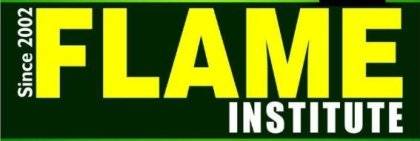(a) Glycerine (b) Water (c) Kerosene (d) All of them at the same time Answer-a (8)
(a) High viscosity (b) Low viscosity (c) Moderate viscosity (d) High density Answer-a (6)
(a) Zero (b) Maximum (c) Equal to critical velocity (d) May have any value Answer-d (2)
(a) Hole number 4 (b) Hole number 3 (c) Hole number 2 (d) Hole number 1 Answer-b (8)
(a) x=√D(H-D) (b) x=√[D(H-D)]/2 (c) x=2√D(H-D) (d) x=4√D(H-D) Answer-c (3)
(a) The water in the tube rises to height v2 /2g (b) The water in the tube rises to height g/2v2 (c) The water in the tube does not rise at all (d) None of these Answer-a (72)
(a) Zero (b) 20.0 cm (c) 10.6 cm (d) 40.0 cm Answer-b (9)
660 kgm–3. The velocity with which gasoline begins to shoot out of the hole is (a) 27.8 m/s (b) 41.0 m/s (c) 9.6 m/s (d) 19.7 m/s Answer-b …
A1 and A2 , are v1 and v2 The difference in the levels of the liquid in the two vertical tubes is h (a) The volume of the liquid flowing through the tube in unit time is A1v1 (b) v2 …
(a) 282.8 cm/sec (b) 432.6 cm/sec (c) 632.6 cm/sec (d) 832.6 cm/sec Answer-a (9)
(a) Upthrust of the air which will be equal to the weight of the air having the same volume as the plane (b) Force due to the pressure difference between the upper and lower surfaces of the wings, created by …
[P/(ρg)]+ h + (1/2)(v2/g) The terms A, B and C are generally called respectively: (a) Gravitational head, pressure head and velocity head (b) Gravity, gravitational head and velocity head (c) Pressure head, gravitational head and velocity head (d) Gravity, pressure …
(a) Move up (b) Move down (c) Move erratically (d) Remain at the same level Answer-b (18)
(a) Bernoulli’s theorem (b) Boyle’s law (c) Archimedes principle (d) Newton’s law of motion Answer-a (14)
(a) Dynamic lift of an aeroplane (b) Viscosity meter (c) Capillary rise (d) Hydraulic press Answer-a (11)
(a) The speed of a particle always remains same (b) The velocity of a particle always remains same (c) The kinetic energies of all the particles arriving at a given point are the same (d) The moments of all the …
A1 and A2 are the cross-sections of the portions of the tube as shown. Then the ratio of speeds v1 / v2 will be (a) A1 / A2 (b) A2/ A1 (c) √A2 / …
(a) Maximum speed and least pressure (b) Maximum pressure and least speed (c) Both pressure and speed maximum (d) Both pressure and speed least Answer-a (4)
(a) 4 : 9 (b) 9 : 4 (c) 8 : 27 (d) 1 : 1 Answer-a (12)
(a) Gravity to viscous force (b) Gravity force to pressure force (c) Inertia forces to viscous force (d) Viscous forces to pressure forces Answer-c (25)
(a) Zero (b) Maximum (c) In between zero and maximum (d) Equal to critical velocity Answer-a (4)
T1 and T2. Their lengths are l1 and l2 and radii of cross-section are r1 and r2 The rate of flow of water under a pressure difference P through tube T1 is 8cm3/sec. If l1 = 2l2 and r1 =r2, …
radius is (Surface tension of the soap solution is (3/100) N/m) (a) 75.36 x 10-4 joule (b) 37.68 x 10-4 joule (c) 150.72 x 10-4 joule (d) 75.36 joule Ans. a (11)
size 10 cm x 10 cm is (Surface tension T= 3 x 10-2 Nm (a)6 x 10-4 j (b) 3 x 10-4 j (c) 6 x 10-3 j d) 3 x 10-4 j Ans. a (10)
106 small drops. The energy used will be (surface tension of mercury is 35 x10-3N/cm (a) 4.4 x 10-3 j (b) 2.2 x 10-4 j (c) 8.8 x 10-4 j (d) 104 j Ans. a (13)
(a) 100 : 1 (b) 1000 : 1 (c) 10 : 1 (d) 1 : 100 Ans. d (5)
The surface tension of liquid is 0.5 N/m. If a film is held on a ring of area 0.02 m2, its surface energy is (a) 5 × 10-2 joule (b) 2.0 × 10-2 joule (c) 4 × 10-4 joule (d) …
(a) Becomes zero (b) Becomes infinite (c) is equal to the value at room temperature (d) is half to the value at the room temperature Ans. a (9)
(a) 1000 : 1 (b) 1 : 1000 (c) 10 : 1 (d) 1 : 10 Ans. d (3)
(a) 10 cm per sec (b) 2.5 cm per sec (c) 5×4¹/3 per sec (d) 5×√2 per sec Answer-c (2)
is 2 x 10-2 N/m. To blow a bubble of radius 1 cm, the work done is (a) 4 π x 10-6 J (b) 8 π x 10-6 J (c) 12 π x 10-6 J d) 16 π …
(a) R/2 (b) R/5 (c) R/6 (d) R/10 Ans. d (9)
(a) Rn(2/3) σ (b) (n(2/3) – 1) Rσ (c) (n(1/3) – 1) Rσ (d) 4πR2(n(1/3) – 1)σ (e) [1/( n(1/3) – 1)] σR Ans. d (4)
(a) π D2 σ (b) 2 π D2 σ (c) 3 π D2 σ (d) 4 π D2 σ Ans. b (4)
is 1.9 x 10-2N/m . Work done in blowing a bubble of 2.0 cm diameter will be (a) 7.6 x 10-6 π joule (b) 15.2 x 10-6 π joule (c) 1.9 x 10-6 π joule (d) 1 x 10-4 π joule …
(a) V/16 (b) V/17 (c) 16V/17 (d) …
(a) (2/9)r2[(1- ρ)/η]g (b) (2/81)r2[(ρ- 1)/η]g (c) (2/81)r4[(ρ- 1)/η]2 g (d) (2/9)r4[(ρ- 1)/η]2 g Answer-c (5)

